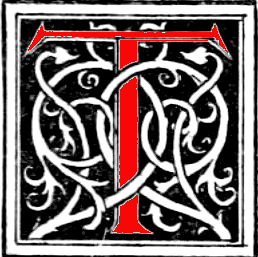
he Greek myth of a union of the gods Hermes and Aphrodite to produce an anatomically perfect male child, Hermaphroditus, was widely current in literate-educated Victorian times, as was the more complete version whereby the love of the nymph Salmacis persuaded the gods to allow the two lovers to become united in the one (superficially male) body. Such a legend may readily be interpreted from the viewpoint of myths as cultural aids in the unravelling of human puzzles, leading to explanation or better ‘completion’. Thus, imagine a male child, feminised in dress and effeminate in behaviour from whatever combination of genetic factors and social parenting. Upon attending a public place for say athletics and/or bathing with disrobing - the individual might be seen by others as a lightly-muscled, long-haired girl endowed with a now more understandable male organ (in this case a penis).
Pseudo-hermaphroditism was even further beyond Greek science and understanding, and also of a Victorian Physiology still awaiting twentieth-century Endocrinology. Here the internal sex-organs or gonads are hidden within the body, with only indistinct and confusing external anatomical features present. Parental preference of gender choice for the child may have been misguided, and ultimately may risk being overthrown, since with the onset of puberty the true gender and anatomical future development of the maturing individual will be inexorably determined by a physiological flow of powerful sex-hormones from the hidden gonadic structures. (Such at least was the pubertal outcome before our own present availability of synthetic pharmaceuticals - “puberty blockers” - and their now controversial application.
Available historical-medical publications were then largely written by clinicians of the period who were generally male, e.g. Findings are presented on missing and inadequate testicular development in the male. The complex terminology, borrowed from botany and Greek, became more widely acceptable in England at L19, SOED: The Shorter English Dictionary : e.g. orchidectomy = surgical removal of a testicle.
Bibliography
1855. Halbertsma, H.J. Über hermaphroditismus spurious femininus. (On spurious hermaphroditism in the female.). Amsterdam. C. G. van der Post. The author discusses the four types then recognised in women by anatomists.
1857. Godard, Ernest. . Etudes sur la monorchidie et la cryptorchidie chez l’homme. (Studies on mono-orchid and crypto-orchid conditions in man.) Paris. Masson..
1859. Warren, J. Mason. Cases of Hermaphroditism Supposed Encephaloid Testicle. Philadelphia: American Journal of Medical Sciences.
SOED offers Late Middle English LME for appearance of “hermaphrodite”, as an individual with mixed gender characteristics. A nautical usage also evolved, for vessels combining mixed styles. At L16 occurs rare usage to denote a homosexual man. Thereafter pre-eminence of usage passes to the cognate emerging fields of Zoology M17, and Botany E18. (Biology only appears at E19, first from France and Germany, from Greek roots bios = life, and logos = reasoned account/discourse.)
The early zoologists had discerned mixed sexual-anatomical features in such lowly groups as snails (Molluscs L18) and earthworms (Annelids M19). Botanists meanwhile, led by Swede Carl Linnaeus. 1758. Systema Naturae, were able to announce widespread sexual-hermaphrodite characteristics throughout the flowering plants, E18. The use of Pseudo-hermaphrodite dates from L19, after the necessary surgical advances dependent upon (1) Early Victorian use of chloroform anaesthesia, and (2) the Mid-Victorian introduction of antisepsis by Joseph Lister. Thereafter, urologists SOED M18 and gynaecologists M19 were able to pursue relevant advances with greater patient safety. “True Hermaphroditism” also occurred, though presenting rarely. Freud (1900: I (1) described it as “both kinds of sexual apparatus side by side and fully developed”.
Far more widely encountered, possibly in all historical epochs, and of correspondingly greater social interest/controversy in a largely rigid and gender-unconscious Victorian Period, were sexual inversion (Homosexuality) and Lesbianism, the latter having long been known as Sapphic Love. These are treated in roughly chronological order below, as off-shoots of the more comprehensive bisexuality. The latter will then be essayed here as occurring in persons as opposed to certain lowly Animal Phyla and advanced Plant Phyla.
Bibliography
Ellis, Henry Havelock.Studies in the Psychology of Sex. Philadelphia. F. A. Davis Co. 1901. Original publication in German, Leipzig 1897. Vol. 2 of an eventual six-volume set published in English before World War 1.
Ellis, H. H.Man and Woman. A Study of Human Secondary Sexual Characters. London. Walter Scott Ltd., 1894.
Krafft-Ebing, Richard von.Psychopathia Sexualis, with special reference to Contrary Sexual Instinct. A Medico-Legal Study.Philadelphia. F. A. Davis Co. 1893. Translated by C. G. Chaddock, from German 7th edition.
Meier, Christian.Athens. A Portrait of the City in Its Golden Age. New York. Henry Holt. 1998.
Last Modified 10 February 2021